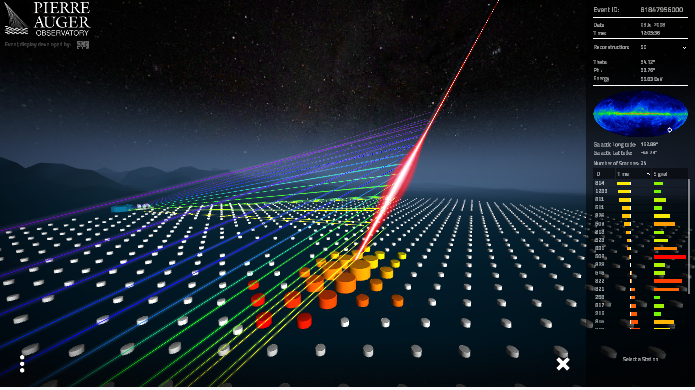The Pierre Auger Observatory, located on a vast, high-altitude plain in the Province of Mendoza in Argentina, is the world’s largest cosmic ray observatory and measures the extensive air-showers produced by cosmic rays above ~1017 eV. The intensity of high energy cosmic rays (those above about 1014 eV) is only a few particles per square meter per day and thus too low to allow for direct measurement with satisfactory statistical precision from balloons or in space. Above 1019 eV the rate falls to about 1 event per km2 per year. The phenomenon of extensive air-showers must be exploited to study cosmic rays at very high energies. An air-shower is a cascade of particles induced by the interaction of a single cosmic-ray with the Earth’s atmosphere. These showers can be observed by telescopes that pick up the fluorescence radiation emitted from nitrogen molecules excited as the shower transverses the atmosphere, while the particles reaching the ground can be sampled by large arrays of detectors. The properties of these extensive air-showers are measured to determine the energy and arrival direction of each cosmic ray and to provide a statistical determination of the distribution of primary masses.

3D display of the most energetic multi-hybrid event recorded by the Pierre Auger Observatory
